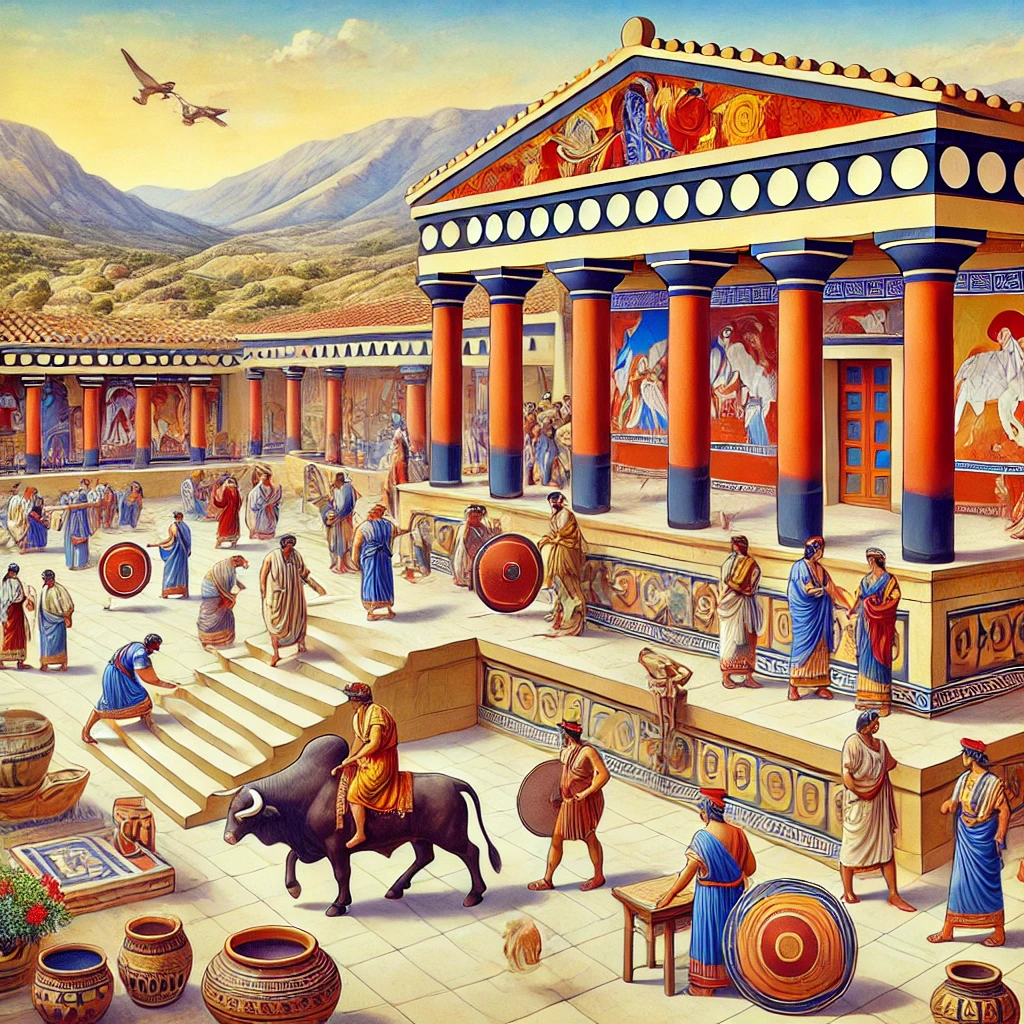In the realm of ancient history, the Civilization Aegean world presents a fascinating tapestry of cultural evolution and influence. The emergence of the Minoan civilization, followed by the rise of the Mycenaean culture, marked pivotal moments in the development of this vibrant region. These civilizations were not only notable for their architectural and artistic achievements but also for their extensive trade networks, which played a crucial role in shaping the broader dynamics of the ancient world. Delving into the origins and development of these societies provides invaluable insights into the interconnectedness and complexity of early human civilizations.
The Origins of Minoan Civilization
The civilization Aegean world is profoundly connected to the origins of the Minoan civilization, one of the earliest advanced civilizations in Europe. Emerging around 2600 BCE on the island of Crete, the Minoans developed a vibrant culture marked by advanced architecture, sophisticated art, and extensive trade networks.
Key aspects of Minoan civilization include:
- Palatial Complexes: The Minoans constructed large palace complexes, such as the renowned Palace of Knossos. These structures not only served as administrative and political centers but also as hubs for religious and social activities.
- Art and Pottery: Minoan art is notable for its naturalistic style and vibrant colors. Their pottery, exemplified by the Kamares ware, demonstrates intricate designs and high craftsmanship.
- Linear A Script: The Minoans developed an undeciphered writing system known as Linear A, used for religious and administrative record-keeping.
The civilization Aegean world was profoundly influenced by Minoan trade. They exchanged goods like olive oil, wine, and pottery across the Mediterranean, fostering economic and cultural connections. Therefore, the origins of the Minoan civilization significantly shaped the early history of the Aegean world.
The Development of Mycenaean Culture
The Mycenaean culture, a pivotal part of the early “Civilization Aegean world,” emerged around 1600 BCE and thrived until about 1100 BCE. This civilization is noted for its influential contributions to later Greek culture and its significant developments in several areas:
- Architecture: The Mycenaeans are renowned for their impressive architectural advancements, including the construction of massive citadels. These structures featured fortified walls made of large stone blocks, known as cyclopean masonry, designed to protect their communities.
- Art and Pottery: Their artistic achievements included elaborate frescoes and intricate pottery. Mycenaean pottery often depicted scenes of warfare and hunting, reflecting the martial spirit of the society.
- Writing and Literacy: Adopting the Linear B script from the earlier Minoan civilization, the Mycenaeans used it for record-keeping and administrative purposes. This script represents one of the earliest forms of Greek writing.
- Military Prowess: Notably, the Mycenaean culture was highly militaristic. Their armor, weaponry, and chariots underscore their emphasis on warfare and conquest, clearly differentiating them from the more trade-oriented Minoan society.
Overall, the Mycenaean culture played a crucial role in shaping the broader narrative of the Civilization Aegean world, bridging the gap between the Minoan and classical Greek periods.
Trade and Influence in the Aegean World
Trade and influence played pivotal roles in the development of the civilization of the Aegean world. The essential geographical position of the Aegean Sea facilitated extensive maritime trade routes. These networks connected various islands and coastal regions, fostering a vibrant exchange of goods, ideas, and cultures.
Some key aspects of trade and influence include:
- Trade Goods:
- Minoans: Known for exporting pottery, olive oil, and wool.
- Mycenaeans: Famous for trading precious metals, pottery, and ivory.
- Cultural Exchange:
- Art and Craftsmanship: Interchange of artistic techniques and motifs, evidenced by similar pottery styles.
- Language: Use of Linear B script by Mycenaeans spread administrative practices and cultural narratives.
- Political Influence:
- Minoan Civilization: Established trade dominance through naval prowess.
- Mycenaean Civilization: Took over trade networks post-Minoan decline, signifying a shift in regional power.
| Civilization | Key Exports | Influence |
|---|---|---|
| Minoan | Pottery, Olive Oil, Wool | Naval trade prowess |
| Mycenaean | Precious Metals, Pottery, Ivory | Adoption of Linear B script |
In conclusion, the intricacies of trade and political power significantly shaped the civilization of the Aegean world. This continuous exchange and adaptation contributed to the richness and diversity of the region’s cultural development.
Frequently Asked Questions
What was the first major civilization to emerge in the Aegean World?
The first major civilization to emerge in the Aegean World was the Minoan civilization, which developed on the island of Crete around 2600 BCE. The Minoans are known for their advanced architecture, complex social structures, and vibrant art. They had significant maritime prowess and traded extensively with other cultures in the Mediterranean region.
How did the Minoan civilization influence other cultures?
The Minoans greatly influenced the Mycenaean civilization, which arose on mainland Greece. The Mycenaeans adopted many aspects of Minoan art, religious practices, and administrative systems. Additionally, Minoan influence can be seen in their Linear A script, which was later adapted into the Mycenaean Linear B script. Trade interactions also facilitated the exchange of cultural and technological innovations across the Aegean and Mediterranean.
What led to the decline of the Minoan civilization?
The decline of the Minoan civilization around 1450 BCE is attributed to a combination of natural disasters and human factors. A massive volcanic eruption on the island of Thera (present-day Santorini) may have caused widespread devastation and subsequent tsunamis. In addition, there is evidence of invasions and internal strife that likely contributed to the Minoan downfall. The Mycenaeans eventually dominated the region, absorbing many Minoan elements into their own culture.
What are some notable archaeological sites of the Minoan civilization?
Some of the most notable archaeological sites of the Minoan civilization include the palace complexes of Knossos, Phaistos, Malia, and Zakros on the island of Crete. The palace of Knossos, in particular, is renowned for its intricate layout, stunning frescoes, and advanced features such as complex plumbing systems. These sites provide valuable insights into Minoan architecture, daily life, and religious practices.


